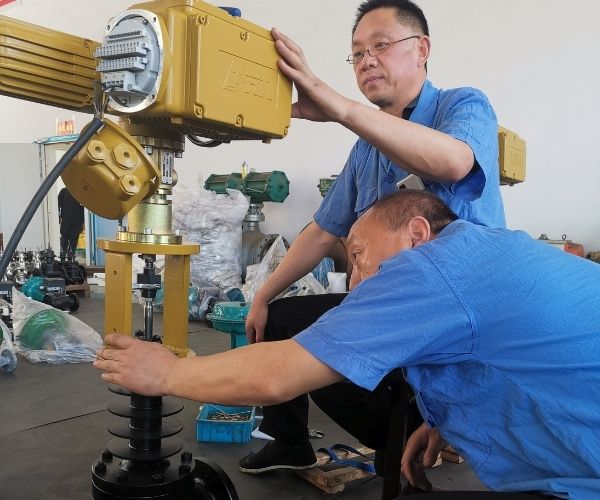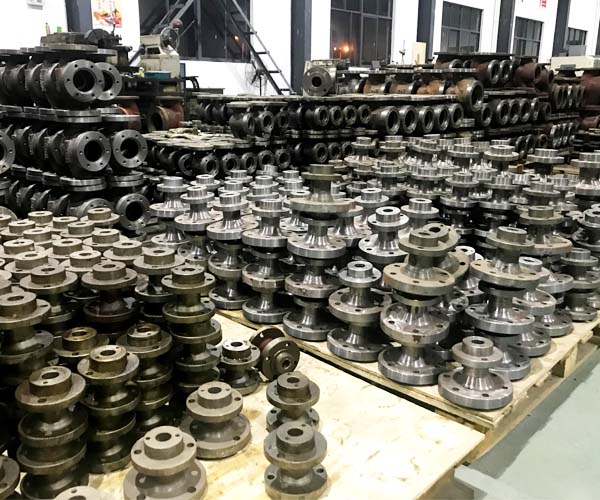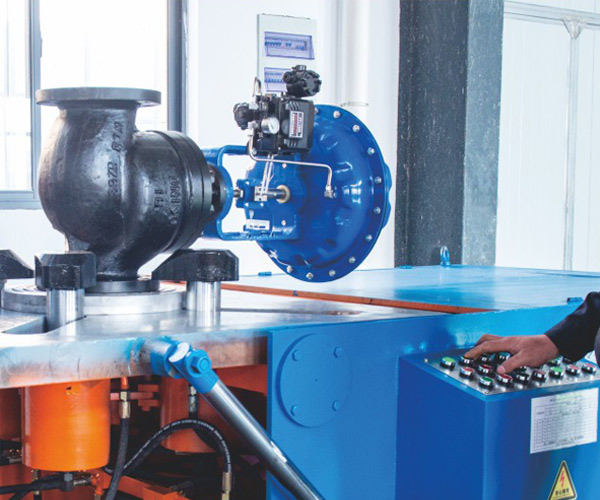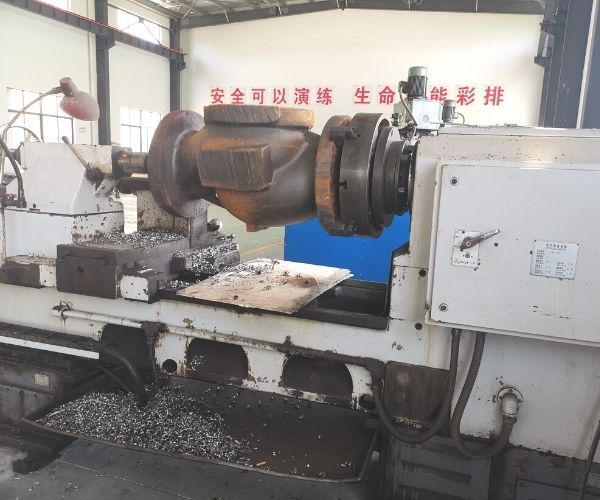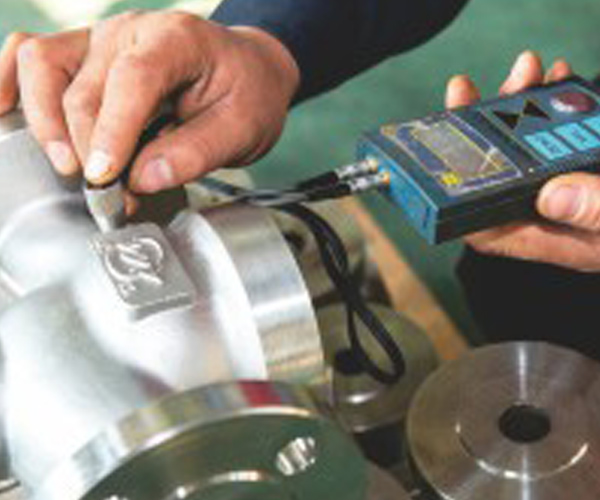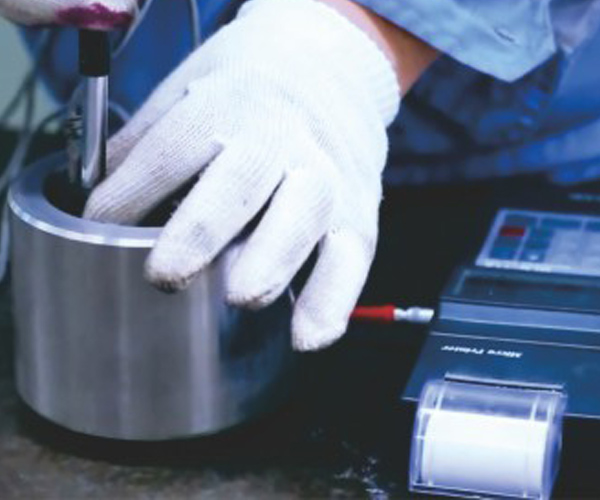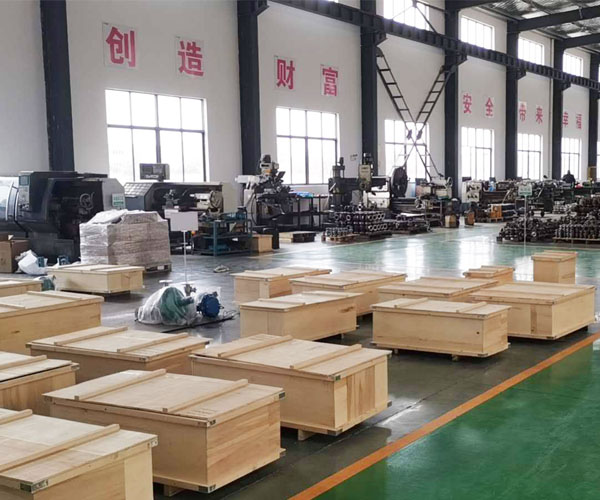Professional Electrically Actuated Valve Manufacturer
BCST electrically actuated valves are electromechanical devices that are used to casually control quarter-flip valves, consisting of ball and butterfly valves.
- Accurate positioning.
- Stop at any factor of the stroke.
- Easy to set speed up and decelerate.
- No exterior sensors.
- Minimum working costs.
- Help adapt machines to bendy processes.
Get in Touch with Us
BCST your Expert Electrically Actuated Valve Supplier in China
Compared to their pneumatic and hydraulic counterparts, electrically actuated valves gives a greater energy-efficient, clean, and quiet approach to valve management. BCST electrically actuated valves are used to remotely manipulate ball and butterfly valves. They substantially grow ease of working quarter-flip valves through supplying remote, computerized manipulate. They additionally offer enough torque for valves that require better torques than cannot be generated through a human. These actuators are utilized in business automation, irrigation, water supply, fluid dosing, heating systems, and fluid transportation.
BCST your One-Stop Electrically Actuated Valve Solution in China
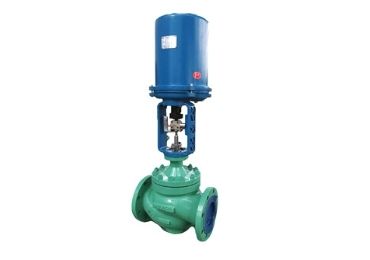
Electrically Actuated Control Valve
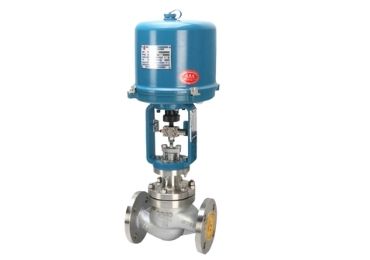
Electrically Actuated Globe Control Valve
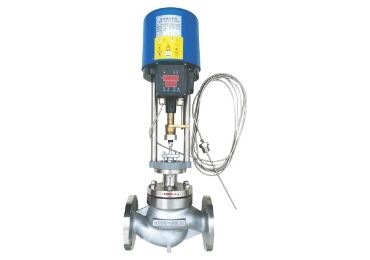
Electric Temperature Control Valve
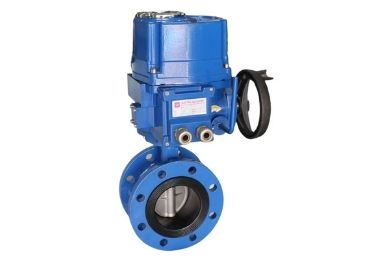
Electrically Actuated Rubber Liner Butterfly Valve
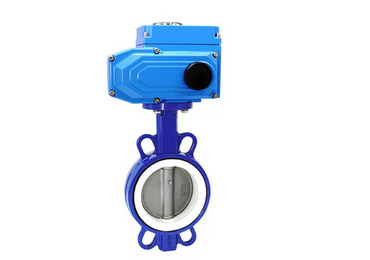
Electrically Actuated Butterfly Valve
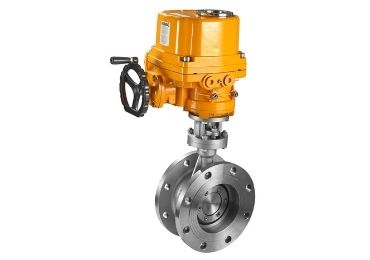
Electrically Explosion-proof Actuated Butterfly Valve
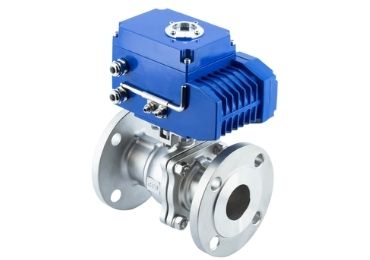
Electrically Actuated Ball Valve
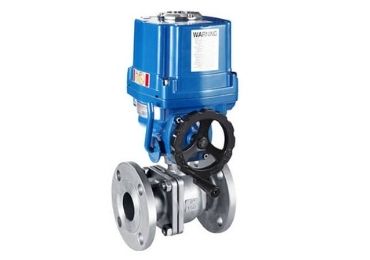
Explosion-proof Electrically Actuated Ball Valve
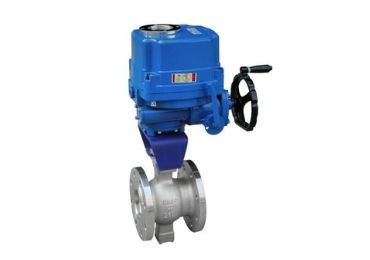
Electrically Actuated V Port Ball Valve
BCST your BEST Supplier for Electrically Actuated Valve
BCST is one amongst the leading reliable and stable electrically actuated valve manufacturers in China. If you’re searching for an experienced manufacturer for your next project, with strong technical background, professional team, and budget-friendly products, BCST is your most suitable choice.
BCST can provide different products supported customers’ requests. From packaging to delivery, you’ll receive BCST’s most detailed service. BCST’s technical team will provide you with professional guidance during usage or installation. With ATEX, ISO, SIL2, RoHS, and CNEX, BCST will provide you high-quality electrically actuated valve at a competitive price.

BCST Electrically Actuated Valve Quality Control
- Technical software caculation
- Technical team meeting
- CAD drawing confirmation
Assembly
- Installation
- Calibration
- Chemical Analysis
- Mechanical Propery
- dimension Checks
- Visual Checks
- Non-destruction Examination
Hydrostatic Test
- Shell test
- Sealing test
- Leakage test
- Air test
- Function test
- CNC machining
- Visual checks
- Dimensional checks
- Liquid penetration test
Outlook Treatment
- Surface Polish
- Painting
- Visual inspection
- Thickness checks
- Visual checks
- Liquid penetration
- Test
- Hardness test
- Lapping
- Dimensional checks
Packing
- Marking
- Exported wooden box
Get the Latest Catalogue Now!
BCST Supply Best Electrically Actuated Valve Solution
Electrically Actuated Valve -FAQ
Introduction
An electrically actuated valve is the electro-mechanical device that controls the quarter-turn valves, such as ball and butterfly valves. These valves are more efficient and accurate than hydraulic and pneumatic actuators.
In this guide, we will study the electrically actuated valve in detail. We will cover its functions, types, usage, specifications, applications, and benefits to help you understand it before you purchase it for your specific requirement. At the end of the guide, you will understand the necessary information about the electrically actuated valve.
1. What is Electrically Actuated Valve?
An electrically actuated valve is the energy-efficient, clean and efficient method of controlling the valve. It controls the opening and closing of the valve. There are different types of valves, such as butterfly and ball valves. Depending on the type of the valves, you apply rotary or linear motion.
Electrically actuated valves have a centralized process control system, responding through remote control. The centralized system makes it hard to reach a large area. Various process control systems use an electrically actuated valve to deliver programmed commands. It allows organizations to increase efficiency and reliability and automate the procedure.
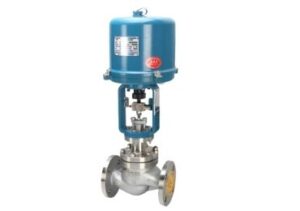
2. What are the Components of Electrically Actuated Valve?
Electrically actuated valves are an excellent alternative to hydraulic and pneumatic actuators in terms of efficiency. These valves are more responsive, easy to use, and technically advanced. The main component of the electrically actuated valve is the motor. The motor can convert electricity in linear or rotary motion for opening and closing the valve. This linear or rotary motion is different while using different electrically actuated valves. The other components of an electrically actuated valve include the limit switch, wiring, and gearing.
When you are using a quarter-turn electric actuator, it will turn the valve to 90˚ when its opens fully. When you are choosing the electrically actuated valve, it is essential to select the correct voltage that matches your system facility. Each system varies in alternating current (AC) and direct current (DC) power sources. The most commonly used voltage types are 12 VAC, 12 VDC, 24 VAC, 24 VDC, 115 VAC, 115 VDC.
3. What is the Design of Electrically actuated Valve?
Electrically actuated valves use electric energy into rotary force, and the electric motor generates torque that turns the valve through an output drive. The power sources are either DC or AC. The motor has a compact, robust housing. The other components of the actuator include gearing, switches, and wiring.
When using a quarter-turn valve, you need 90˚to open or close the valve. Torque is essential for turning the valve. The electrically actuated valve transmits the torque to the output shaft that connects with the valve that causes the rotation of the valve’s ball and disc. This, in turn, causes the orifice to open or close, thus either allowing or blocking the flow. The torque generation by the actuator depends on the gearing and motor capacity.
4. What is the Requirement of Torque in Electrically Actuated Valve?
Torque is the force generated by the electric actuator for closing a rotational valve. An electrically actuated valve generates this force by transmitting it to the output shaft and valve stem. There are different levels of motor capacity, and you should select the actuator based on a breakaway torque.
The motor capacity should be higher than the valve’s required torque to ensure it can open or close the valve. Breakaway torque is the torque that causes the valve to move from its resting position. It should be higher than the run torque because the media can cause increased friction because of its movement from a static position. Breakaway torque is the highest level of torque for operating the system.
5. What are the Key Features of Electrically Actuated Valve?
Electrically actuated valves are rates by the National Electrical Manufacturers Association (NEMA) that provides safety standards for the equipment.
Some of the key features of an electrically actuated valve are as follows:
- It is easy to use and has a compact design
- Adjustable cams that allow 90˚ to 270˚ operation
- External wire leads with NEMA-4/4 X housing
- Lubricated gear train and ISO 5211 direct mounting pad
- High strength gears in compliance with AGMA standards
- High strength PSC motor with automatically resetting thermal protector
- The electrically actuated valvehas the limit switches of sensors or proximity sensors that allow the monitoring of the actuator from a remote location.
- A local position indicator of the electrically actuated valveprovides a visual display of the valve.
- The electric position sensor will compare the valve signal to the control signal and transmit this signal to the electric motor.
- Fail-safe is an important feature of an electrically actuated valve. The valve will open or close automatically when there is a power failure.
- There are manual tools, such as wheels, levers, and pumps, that you can use in case of emergencies. This feature is very important and effective in emergencies.
- The electrically actuated valvehas thermal overload protection to protect the electric motor. It also protects the motor when it is overheated.
6. What are the Applications of Electrically Actuated Valve?
There have been increasing applications of the electrically actuated valve in past years because of the rising decentralization in automation technology. Various industries are now equipping the process controllers with electrically actuated valves to meet the automation standards. These valves are used in various industrial sectors with valves, pumps, and motors.
The most common applications of the electrically actuated valves include technical process plants, power plants, food and beverage, agriculture, paper industry, power plants, upstream, midstream, and downstream oil and gas plants.
7. What is the Mounting Process of Electrically Actuated Valve?
The electrically actuated valve has a connection interface to connect them with a valve. This connection interface consists of an output drive, a shaft square, and a flange to bolt the actuator with a valve. When you are mounting the electrically actuated valve, use industry-standard hardware parts. ISO 5211 is the mounting hardware that ensures the efficient working of the components.
Three main components are required for mounting the electrically actuated valve. These components are an output drive, a stem connecting the valve head, and a flange for mounting the actuator into the valve. Different flange types vary by torque, dimension, screws, and bolts. These valves and actuators can be interchangeable as long as they follow the ISO 5211 standard.
8. What are the Specifications of Electrically Actuated Valve?
- The housing cover of the electrically actuated valve is made of epoxy-coated aluminum. The external shaft has stainless steel material.
- The temperature ranges from 0˚F to 160˚F.
- Direct mount connections comply with the ISO 5211 standards.
- The electric motor has a DC of 12 to 24 volts, AC of 24, 120, and 220 volts.
- Electrically actuated valves can operate for an ambient temperature of -40˚C up to +60˚C.
- Torque output is 125 or 300 in/lbs
9. What are the advantages of Electrically Actuated Valve?
An electrically actuated valve converts electricity into kinetic energy through linear or rotary motion. Its automation system increases the process efficiency. Various electrically actuated valve designs vary in dimensions and shape, and each is designed for a specific task within the processes.
With the rising demand for automation, the demand for electrically actuated valves also increases, replacing the manual valve. There are several advantages of an electrically actuated valve, due to which it is preferable in various industries. Another benefit of an electrically actuated valve is the easy valve installation that saves installation costs. It has a low operating cost, minimum noise, low maintenance, and flexible motion control.
An electrically actuated valve can work for an extended period of up to 99 hours, improving production efficiency, engineering automation, and project speed. There is no need for the labour to open the valve, reducing labour costs. The electrically actuated valve automatically turns the load protection device when the voltage is too high and the motor is overheated. The smooth opening and closing of the motor reduce the failure rate to a great extent.
10. What are the disadvantages of Electrically Actuated Valve?
Although there are countless benefits of the electrically actuated valve, there are some disadvantages. One of the main drawbacks of this valve is the excessive initial equipment cost. Also, the electrically actuated valve structure is complex, so it’s more prone to failure—this complexity results in higher technical requirements for onsite maintenance personnel.
If you have to make the adjustments often, it causes motor overheating and increases the wear of the reducer gear. Hence, the electrically actuated valve is suitable for places with low explosion-proof requirements. The valve’s operation is also slower and takes more time to reach from the output signal to the specified position.
11. What is the Difference between Pneumatic and Electrically Actuated Valve?
One of the main differences between pneumatic and electrically actuated valves is the driving force of the operation. The electrically actuated valve is controlled by AC or DC voltage, while the pneumatic actuator needs a 60 to 125 PSI air supply. The second significant difference is the sizes of both actuators. Double-acting pneumatic actuators are 70% smaller than electrically actuated valves.
The third difference is speed. The pneumatic actuator takes ½ to 1 second for opening or close the valve. An electrically actuated valve takes approximately six seconds or more. Pneumatic actuators can operate in temperatures between -20˚F and 350˚F. The electrically actuated valve, on the other hand, operates between 40˚F and 150˚F. Pneumatic valves have a lower purchase price than the electrically actuated valve.
12. How to Maintain the Electrically Actuated Valve?
If you want an electrically actuated valve to be durable and productive, you need to take enough measures for the maintenance of the valve. Following are the tips for maintaining the valve.
- Keep electrically actuated valve in the dry and ventilated room.
- If you store the valve for a longer time, check it regularly to remove dirt and use anti-rust oil to prevent it from any damage.
- After installing it, check the sealing surface regularly.
- The valve should be tested for its sealing performance after assembling.
- Regularly check the stem and stem nut of the valve. Replace it immediately in case of any damage.
- Keep the regular assessment of the electrically actuated valve to ensure process integrity.
- Carry out inspection and testing of the valve to ensure reliable operation and minimum downtime.
13. How to Install the Electrically Actuated Valve?
The installation and maintenance of an electrically actuated valve are essential for its long-term usage. Primarily, the manufacturers provide the installation, maintenance, and troubleshoot manual to the customers, but they are not sufficient. You need to have the necessary knowledge of the installation and operation of an electrically actuated valve.
Before installing and mounting the actuator to the valve, ensure that the valve and actuator are in the same position. Remove mechanical stops but do not remove parts essential for the valve’s proper operation, such as gland nut. Again check that the valve and actuator are in the same place. Install mounting hardware on the valve and tighten all nuts and bolts.
Remove the actuator cover and turn on the power to the actuator. Before turning the power, you need to be extremely cautious as circuits could cause serious accidents. Afterwards, check the alignment by operating the valve to the close and open position, respectively, and secure cover screws.
14. What are the Types of Electrically Actuated Valve?
There are two main types of electrically actuated valves, rotary and linear.
Rotary electrically actuated valve
The rotary electrically actuated valve rotates a quarter turn from open to close. Rotary actuators are used with the ball, plug, and butterfly valves. They use electromagnetic power from the motor and allow multiple positions to stop. The components of the rotary electric valve actuators include electric motor, gearing, drive coupling between gear and valve stem, and travel limiting devices.
These valves are applicable in the electric power industry, high power switching gears, and packaging applications. It has actuator torque that rotates the axis. You can determine this force by multiplying the applied force by the distance from the pivot point to the point where force is applied.
Linear electrically actuated valve
A linear electrically actuated valve is used with the globe, gate, diaphragm, and angle valves. It has a sliding stem that opens or closes the valve. These valves are suitable for tight tolerances. It provides linear motion through a motor-driven ball screw. The ball screws are power screws with lower friction and higher efficiency.
The components of a linear electric actuator include an electrical enclosure, electrical motor, gearing, valve stem, and travel limiting devices. The actuator force of the linear actuator is measured in pounds. The actuator supplies force to overcome pressure in the system.
15. What are the Specifications of Rotary and Linear Electrically Actuated Valves?
The general specifications of rotary and linear electrically actuated valves are standard. Electrically actuated valves have throttling valves that receive control signal inputs to adjust the closure position of the valve. A valve stem diameter consists of the lead and pitch of the valve stem for sizing the automation. The stem diameter and pressure drop calculate the torque demand.
There is an actuation time to close the linear motion of the valve. When there is a power outage or loss of power, the failsafe method can open or close the actuator depending on the requirement of the system. The voltage requirements of AC and DC will depend on the voltage in the system.
The duty cycle measures how long the actuator can work before resting. When using an electrically actuated valve, there is a need for occasional idling time as these valves generate a lot of heat.
16. What are the Factors to consider when purchasing an Electrically Actuated Valve?
An electrical valve actuator is an effective tool for controlling the opening and closing of the valve. The usage of these actuators is very extensive in the production process, so you should purchase them after proper research. Many people choose electrically actuated valves based on the low price rather than quality, leading to a series of issues.
Before purchasing the actuator, understand the type of valve suitable for the actuator mechanism. The improper size of the valve can cause operation issues in the system. Determine the pressure and temperature conditions in which the valve will operate. You can get the National Electric Manufacturers Association (NEMA) guide on constructing and installing the electrically actuated valves.
You should consider the differential pressure across the valve, with the factors such as the size and design of the valve. The other factors that need consideration include friction, media temperature, and valve and valve stem characteristics. The oversize actuator can be harmful and damage the valve’s stem. It is essential to choose the actuators by the technically trained experts.
The most important sizing factors to consider are the minimum and maximum supply pressure. Your actuator should be capable of developing enough torque to operate the valve at minimum supply pressure. That will ensure the proper functioning of the valve at the lowest supply pressure. The actuator should also be capable of handling the maximum pressure.
The power requirements of the valve also depend on the speed of the operation. More speed is required for operating effectively and efficiently. The electrically actuated valve has gear motors, so you cannot control the speed without making gear adjustments. You should also consider NEMA guidelines when operating in a hazardous environment. Finally, purchasing the wrong actuator can damage the valve stem, so choosing the proper actuator will ensure fewer shutdowns.
17. What are the Wiring Possibilities of Electrically Actuated Valve?
There are 2 and 3 points electric valve actuator wiring. The 2-point (on/off) control actuators have three wires. One for +, one for –, and the third is the control wire. For rotating the valve, the control wire needs to be powered to open and un-powered to close and vice versa. If there is no power supply, the valve remains in the latest position. The 2 points electric actuator control wire opens the valve in 6s. It closes in 6s when the wire shuts down.
The three-point control actuators have three wires, one for – and two for +. The two control signals can open or close the valve depending on which wire is powered. The control wire opens the valve in 16s. The valve remains in the current position if control wires are disconnected. You cannot power both control valves simultaneously because they can damage the actuator. Before installing the wiring in the electrically actuated valve, ensure the actuator code matches the diaphragm, as improper installation can lead to dangerous situations.
18. What is the Working Principle of Electrically Actuated Valve?
The electrically actuated valve converts electrical power into the motor using rotary or linear motion. The increasing demand for automation also increases its demand. The main components of an electrically actuated valve consist of a motor, limit switches, lead screw, gears, and cylinder. The motor is the main component of the actuator.
You apply voltage to the stator assembly, and then the voltage is converted into the current, which acts as a secondary working. The motor creates the motions that are transferred to the cylinder. The cylinder converts the motion into linear motion. The gears in the cylinder promote linear motion.
Conclusion
There is a growing demand for electrically actuated valves due to the increasing demand for automation. You need a motor and gear to power them and its energy-efficient method. Our company manufactures and delivers high-quality electrically actuated valves to our customers with a high focus on quality and durability.
If you want an electrically actuated valve for your application, you can use our services. If you have any queries about our product line, you can contact us at any time. Our professional team members will be happy to assist you in the best possible way.


